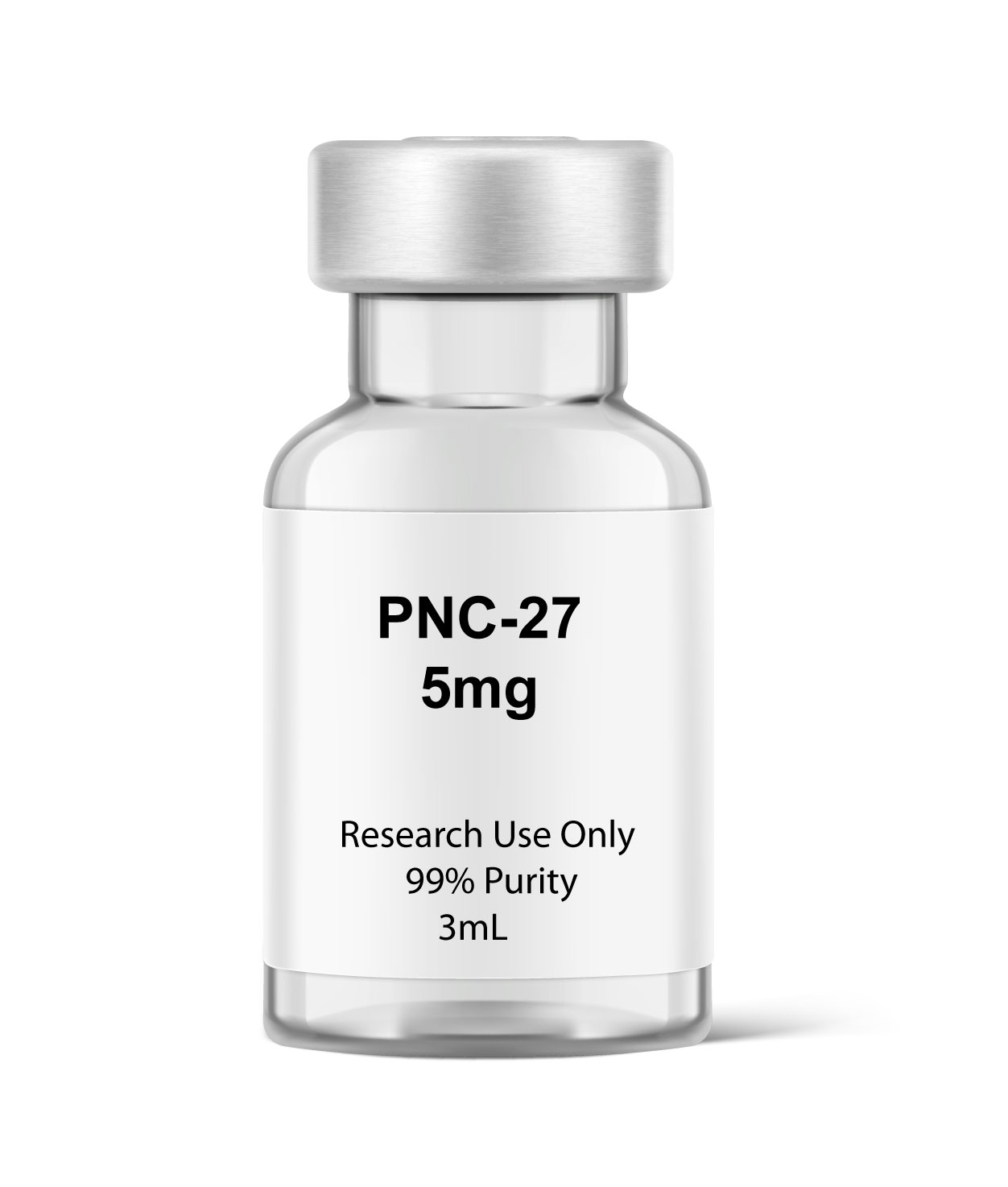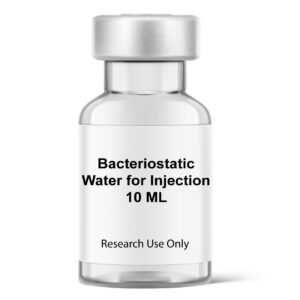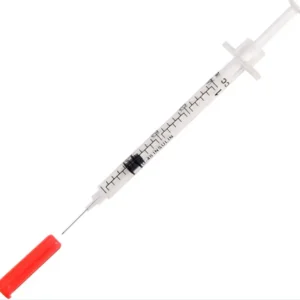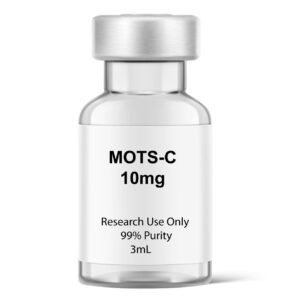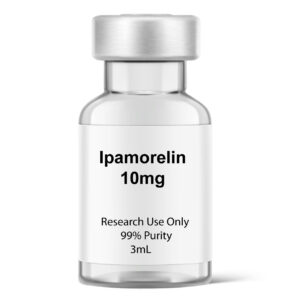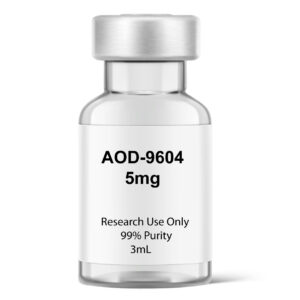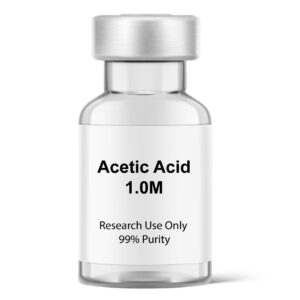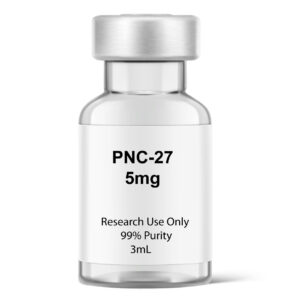Introduction to PNC-27
PNC-27 is a synthetic 32-amino-acid peptide designed for oncological research, particularly studies exploring selective membrane-targeting strategies in cancer cells. Originally developed in 2000 by researchers at SUNY Downstate Medical Center, PNC-27 fuses a segment of the p53 tumor suppressor protein (residues 12–26) with a membrane translocation sequence (MRP) derived from antennapedia. This hybrid structure allows it to bind HDM-2 (human double minute 2) and integrate into cancer cell membranes, making it a unique candidate for investigating non-apoptotic, necrotic cell death mechanisms.
PNC-27 remains a research-grade compound and is not approved by the FDA, EMA, or any regulatory agency for therapeutic use. All testing should be performed in controlled laboratory settings for in vitro or animal research only.
Mechanism of Action
PNC-27’s anticancer activity centers on selective binding to HDM-2, a protein found in elevated concentrations on the plasma membranes of cancer cells. Once bound, the amphipathic α-helix structure of PNC-27 enables insertion into the lipid bilayer, forming transmembrane pores. This disrupts membrane integrity and induces cell necrosis, typically within minutes to hours of exposure.
Key research findings include:
1:1 binding of PNC-27 to membrane-bound HDM-2
Pore formation verified via electron microscopy in multiple cancer lines
No cytotoxic effects observed on normal cells (e.g., fibroblasts, lymphocytes)
Mechanism is p53-independent, effective in p53-null cell lines such as K562 leukemia cells
PNC-27’s dual structure—mimicking p53 while incorporating a delivery sequence—enhances specificity and membrane permeability, making it a promising model for studying tumor-selective membrane-targeted therapies.
Key Research Areas
While human use is strictly prohibited, PNC-27 has been investigated in models studying:
Selective lysis of cancer cells (pancreatic, breast, ovarian, colon, lung, leukemia)
Synergistic cytotoxicity when combined with paclitaxel, methotrexate, or rapamycin
In vivo tumor suppression (e.g., nude mice with pancreatic xenografts)
Targeted peptide delivery via conjugation with nanomaterials like single-walled carbon nanotubes
Resistance circumvention in cancer cells lacking functional p53
Benefits Observed in Preclinical Studies
Based on early-stage research, the following benefits have been observed in vitro and in vivo (animal models):
Selective Cancer Cell Necrosis: Rapidly lyses cancer cells through pore formation without harming non-cancerous tissues
Broad Spectrum Activity: Shown effective in solid and hematologic malignancies, including drug-resistant and p53-null cells
Rapid Onset: Cell lysis often occurs within hours of exposure in culture
Drug Potentiation: Lowers IC₅₀ values of certain chemotherapeutics in co-treatment studies
Tumor Reduction in Mice: Eradicates or reduces tumor volume in xenograft mouse models with minimal off-target toxicity
Nanoparticle Compatibility: Enhances tumor targeting when paired with drug delivery systems
Certificate of Analysis
The following technical details outline the properties of PNC-27 5mg, providing a scientific snapshot of the peptide.
Property | Description |
|---|---|
Chemical Sequence | H-Pro-Pro-Leu-Ser-Gln-Glu-Thr-Phe-Ser-Asp-Leu-Trp-Lys-Leu-Leu-Lys-Lys-Trp-Lys-Met-Arg-Arg-Asn-Gln-Phe-Trp-Val-Lys-Val-Gln-Arg-Gly-OH |
CAS Number | 1159861-00-3 |
Molecular Formula | C188H293N53O44S |
Molecular Weight | 4031.70 g/mol |
Appearance | White Lyophilized Powder |
Research Use Only
PNC-27 5mg is intended exclusively for in vitro research or non-human animal studies. It is not for use in humans or animals for therapeutic purposes, nor is it a food, drug, or cosmetic. Misbranding, repackaging, or misapplication is a violation of applicable laws. This product should be handled by trained professionals in appropriate biosafety settings.

